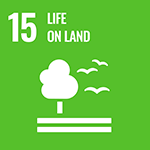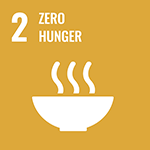Development of Internationally Standardized Microbial Resource Center to Promote Life Science Research and Biotechnology
Principal Investigator
ODA Recipient Country
Republic of Indonesia
Research Institutions in Japan
National Institute of Technology and Evaluation (NITE) / RIKEN / The University of Tokyo
Research Institutions in Counterpart Country
Research Center for Biology of Indonesian Institute of Sciences (RCB-LIPI), etc.
Adoption fiscal year
FY 2010
Research Period
5 Years
Overview of the Research Project
Utilizing the microorganisms that underpin rich tropical ecosystems in a diversity of industries
Indonesia boasts the second richest biodiversity in the world, and the conservation of its biological resources is a matter of keen interest. However, no system yet exists for the sustainable use of Indonesia’s microbiological resources, which are being viewed eagerly for potential application in agriculture and environmental technology. This project is establishing a microbial resource center to preserve and provide access to such useful microorganisms, which will be recorded in a database and made available worldwide so as to contribute to resource conservation and development of new industries.
Supporting developing countries through the Sleeping Microbial Beauties Project
The goal of the Sleeping Microbial Beauties Project is establishment of a microbial resource center which holds diverse microorganisms characteristic for Indonesia. The microbial resources are collected, characterized and preserved for utilization in agriculture and industries. The management skill of the center for utilization of materials is transferred as well as the knowledge and techniques for isolation, preservation, and taxonomy of microorganisms. The project will contribute to the conservation of biodiversity and discovery of valuable microorganisms.
Photo gallery

Samples of microalgae collected from nature using cotton buds. A medium is added to these tubes to try culturing the microalgae.
Research Project Web site
Press Release
Links
Projects
Contact Us
Japan Science and Technology Agency (JST)
Department of International Affairs
SATREPS Group
TEL : +81-3-5214-8085
Related articles by Category
- Bioresources
Bioresources

 Republic of Indonesia
Republic of Indonesia
Promoting the blue economy by utilizing seaweed resources!
Development of Sustainable Seaweed Based Functional Products for Promoting Blue Economy
- Indonesia
Environment / Energy
(Carbon Neutrality)
 Republic of Indonesia
Republic of Indonesia
Creating a new chemical industry linked to Indonesian agriculture!
Development of Integrated Bio-circular Economy from Food and Energy Estate Waste Fraction to Biofuel and Bio-chemicals
- Asia
Environment / Energy
(Global-scale environmental issues)
 Kingdom of Thailand
Kingdom of Thailand
“Natural rubber seeds”, the unlimited potential hiding in natural rubber plantations
Utilization Technology of Rubber Seeds for Green Products to Mitigate Global Warming and Plastic Pollution
- SDGs : Goal.15
Environment / Energy
(Global-scale environmental issues)
 Republic of Peru
Republic of Peru
Solve the challenges facing the Andean-Amazon region by sustainable forest management
Establishment of Integrated Forest Management System Model for Conservation of Mountain Forest Ecosystems in the Andean-Amazon





















